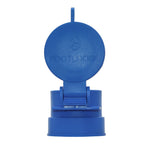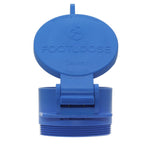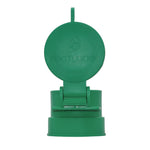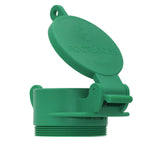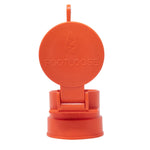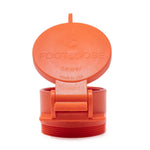You have no items in your shopping cart.
The RV life is all about experiencing the world around you and enjoying the freedom of the road—but when you’re stuck on the side of the road with a flat tire, those benefits go out the window.
Here’s the good news: tire issues don’t have to be an inevitable part of RV life. With the right preventative maintenance, you can keep the good times rolling.
A chief part of this maintenance involves checking your tires on a regular basis. To help you stay safe and mobile, we’ve created this guide to tire inspections for your RV.
Why is it important to inspect your RV tires?
Your RV’s tires are among the most important parts of the vehicle as far as safety is concerned. Tires that are improperly inflated or damaged could blow out while you’re driving your RV, causing you to lose control of the vehicle. This is dangerous at any time, but it’s particularly concerning if you’re driving on slick roads or in mountainous areas.
While safety is the top concern, there are other reasons to keep your tires at their best. Improperly inflated tires may wear more quickly or unevenly, causing you to replace your tires more often—and that isn’t easy on your wallet. Poor tire inflation also reduces your RV’s performance and its fuel economy, so it will be less eco-friendly, more difficult to handle, and cost you more at the pump.

How often to check your tires
Chances are that you aren’t checking your RV’s tires as often as you should. Because of the importance of tire inflation, it’s recommended that you visually check your tires before and after any travel day. If your RV is stationary or in storage, you should check the tires at least once per month.
Some RVs have tire pressure monitoring systems or TPMSs, either through the manufacturer or installed as an aftermarket purchase. As beneficial as these systems are, they shouldn’t be your only data source. You should still check your tires manually on occasion to make sure you’re getting the same readings as your TPMS.
How to inspect your RV tires
How do you make sure your RV tires are properly inflated and ready for a day on the road? Follow these straightforward steps.
Weigh your RV
Unlike tire pressure in a passenger car, when it comes to tire pressure for an RV, you need to take the load into account. Take your RV to a truck stop or RV weigh station to determine the total weight and distribution. You’ll need this information to use your tires’ load and inflation tables, which will tell you what pressure you need in each tire based on the load the tire is carrying.
Wait for the tires to cool
It’s crucial to only check your tire pressure once your RV has cooled for several hours after driving. Temperature will affect the air pressure and can give you an inaccurate reading, so make sure your RV has had time to rest before you grab the pressure gauge.
Check each tire’s air pressure
When your RV is cool, it’s time to get down to business. You can use a small handheld tire pressure gauge, a gauge on your portable air compressor, or whatever pressure gauge you prefer. Manually check each tire’s air pressure and jot down the numbers.
Verify balance between outer and inner tires
Once you’ve found the pressure in each tire, pay special attention to the difference between outer and inner tires. It’s important that each outer tire and its inner tire have the same air pressure so they will both bear weight and wear more evenly.
Verify balance between tires on an axle
In the same way that an outer tire and its inner tire must be balanced, you also need to maintain air pressure balance between tires on the same axle. If there’s a difference in tire pressure on either end of an axle, it will cause a weight imbalance and a tire wear imbalance too.
Adjust tire inflation accordingly
Now that you have all the information you need about each tire’s air pressure, use an air compressor to adjust any tire’s air pressure as needed. You’ll find the ideal PSI for each tire or set of tires on your load and inflation chart.

Look for tire wall damage
Now that your tires’ air pressure is all up to snuff, it’s a good idea to check for other tire issues while you’re at it. One of the most dangerous issues to look for is a bubble in the tire wall. This means there is damage to the tire wall and that air is pressing on the outer wall of the tire, making it highly vulnerable to a blow-out. Check for any cracking in the tire walls as well.
Check tread depth
Your RV tires should have tread depth indicators to tell you how far the treads can wear before it’s time for replacement. As you’re checking your tires, look for the tread depth indicators to ensure that your tires still have enough traction.
Check your spare tire
This doesn’t need to be done every day, but it’s a good idea to do it every month or so. Spare tires will lose air pressure over time while they’re stored, and the last thing you want is to put on your spare tire in an emergency and find that it’s flat. Check the air pressure on occasion and top it off as necessary.
Keeping your RV on the road with proper tire care
Your RV tires are instrumental in your RV’s safety and performance. Checking your tire pressure might be a simple RV hack, but it’s a useful one nonetheless. Before hitting the road, if you want to make sure all your RV’s systems are at their best, follow our RV maintenance guide.



